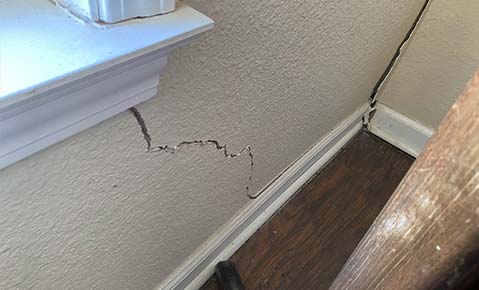Looking for information on how to fix cracks in drywall? If so, you’ve landed on the right page because that’s what we’re going to review in this article. We’ll review what causes drywall cracks, the difference between structural and non-structural cracks, how to fix drywall cracks and more.
What Causes Drywall Cracks?
Drywall cracks are pretty common and happen for various reasons, including the following:
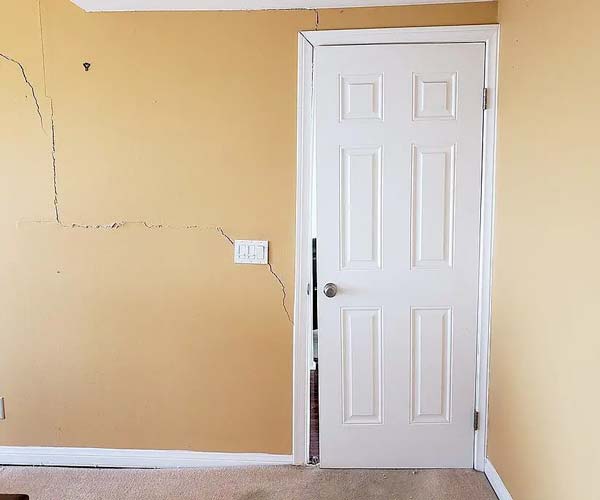
- Seasonal temperature and humidity fluctuations – One of the most common causes of drywall cracks is seasonal changes in temperature and humidity. These fluctuations can cause the drywall panels to expand and contract, leading to cracks.
- Structural issues – If a building has structural problems, such as foundation settlement, it can cause the drywall to crack. Also, if uneven surfaces are behind the drywall, it can cause cracking.
- Improper installation – If the drywall wasn’t installed correctly, this can also cause cracking. An example is improperly taped drywall that comes loose, causing a crack.
- Poor quality or damaged drywall – Poor quality drywall, or drywall damaged during transport or installation, can cause cracking.
- Normal wear and tear – Normal wear and tear can also cause drywall to crack. For example, heavy items hung on the walls, such as large pictures or mirrors, can stress the drywall, leading to cracks.
With proper installation, maintenance, and care, drywall cracking can be minimized or prevented entirely.
Is The Drywall Crack Structural Or Non-Structural?
Drywall cracks are either structural or non-structural.
Structural drywall cracks
Structural drywall cracks occur due to issues with the foundation and affect the overall structural integrity of the building. These cracks indicate a serious problem that needs to be addressed immediately. Structural cracks worsen over time, and you’ll pay more for the repair if you wait.
Non-structural drywall cracks
Non-structural cracks in drywall happen due to temperature or humidity fluctuations, improper installation, normal wear and tear, etc. Non-structural drywall cracks are less serious but may still require attention.
It’s important to note that it’s not always easy to distinguish between structural and non-structural drywall cracks. Sometimes, what looks like a non-structural crack is actually a structural crack in its early stage. For this reason, it’s essential to have any cracks inspected by a foundation repair contractor or structural engineer to determine their cause and severity.
How To Know If A Drywall Crack Is Structural Or Non-Structural?
Structural drywall cracks
A drywall crack is likely structural if:
- It’s over ⅛ inch wide
- It’s a crack that goes across the ceiling and down a wall
- The crack is diagonal
- The crack is a separation between the ceiling and the wall
- The drywall crack returns after being fixed
If you see any of the above – or anything else that strikes you as suspicious – contact a professional foundation repair contractor immediately and ask for an evaluation.
For more information, see Why could drywall cracks mean my foundation is settling?
Non-structural drywall cracks
A drywall crack is probably non-structural if it’s a hairline crack less than ⅛ inch wide. In most cases, the crack can be repaired using joint compound and drywall tape.
How To Fix Non-Structural Cracks In Drywall
Fortunately, non-structural cracks in drywall can be easily repaired with the right tools and knowledge:
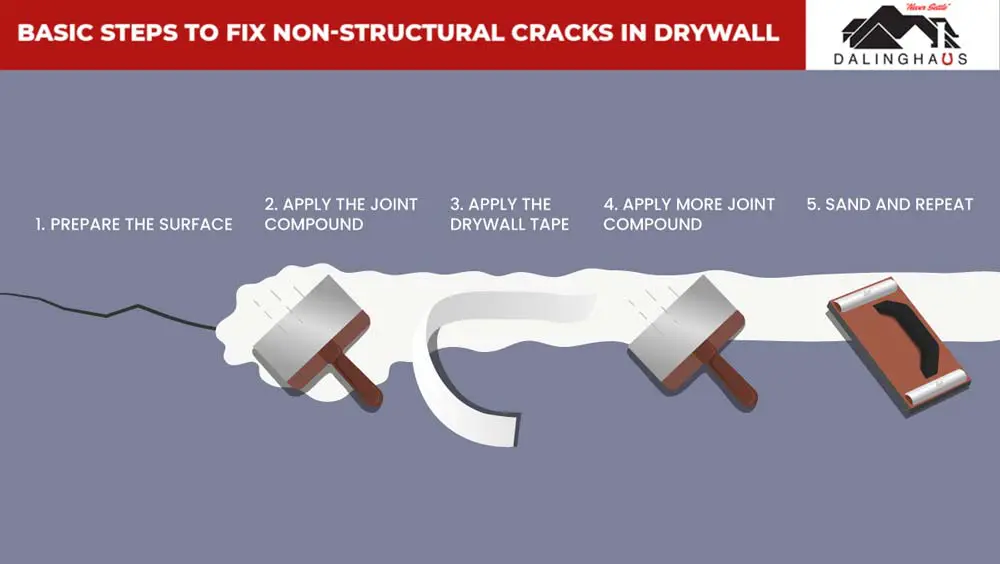
- Prepare the surface – Before you begin, clean the area around the crack. Remove any loose debris or chipped material. This will ensure that the repair adheres to the surface properly.
- Apply the joint compound – Apply the compound over the crack using a putty knife. Spread it evenly and feather the edges to ensure a smooth finish. Don’t apply the joint compound too thickly. A thin layer will suffice.
- Apply the drywall tape – Place a piece of drywall tape over the joint compound. Run the tape lengthwise over the crack, pressing down firmly to ensure it adheres well.
- Apply more joint compound – Using the putty knife, apply a second, thicker layer of joint compound over the tape. Smooth it out evenly, feathering the edges to create a seamless finish. Allow the joint compound to dry completely, following the recommended drying time stated on the packaging.
- Sand and repeat – Once the joint compound is dry, sand the surface lightly to remove any rough spots or ridges. Wipe the surface clean with a damp cloth to remove any dust. If necessary, apply another layer of joint compound and repeat the sanding process until the surface is completely smooth.
Repairing non-structural drywall cracks is a relatively simple process that can be completed with just a few tools. Regular maintenance and care allow you to keep your drywall looking pristine for years.
How To Fix Structural Drywall Cracks
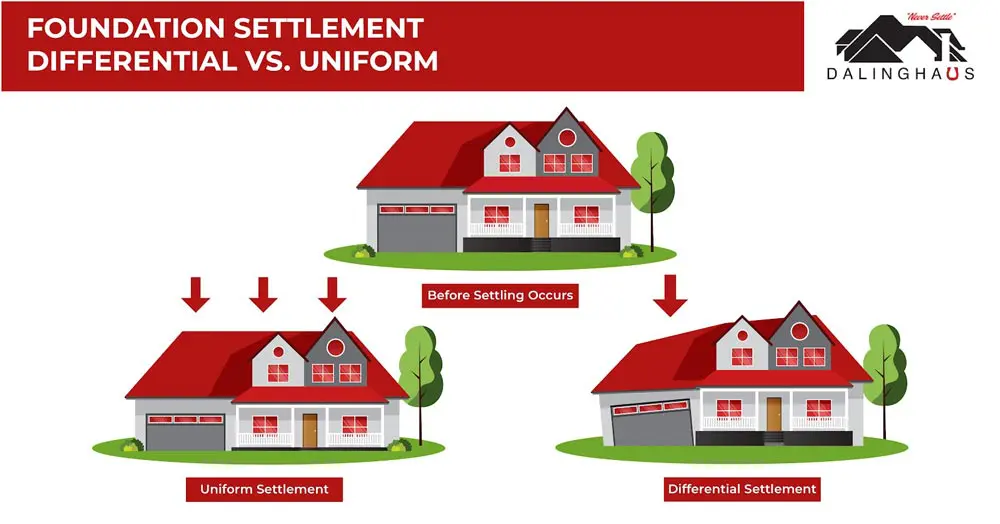
Most structural drywall cracks are caused by differential settlement. This is when the building’s foundation settles into the ground unevenly. Differential settlement puts a lot of stress on the foundation, and if it isn’t corrected, it will eventually lead to severe structural damage.
If the drywall cracks are structural and caused by differential foundation settlement, the permanent repair solution will be underpinning to lift and stabilize the foundation.
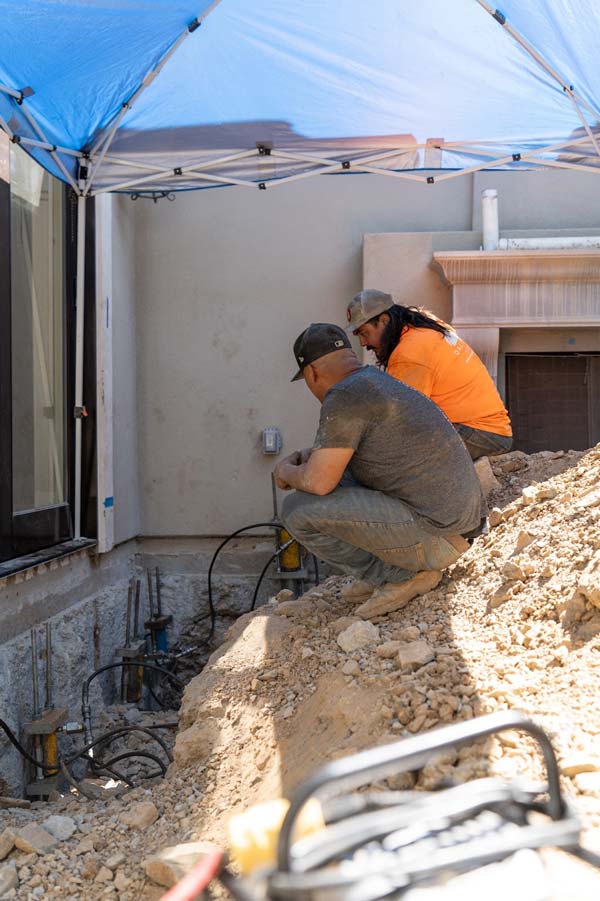
Foundation underpinning involves piers, which are strong, steel tubes driven deep into the ground below the foundation until they reach stable soil that can support the foundation. Once the piers are in place, a synchronized hydraulic lifting system raises the foundation to maximum practical level, which means the foundation is raised as much as possible without causing damage. After the piers are in place, the drywall cracks can be repaired.
It’s important to note that underpinning with piers requires specialized knowledge and equipment. Therefore, it’s not a DIY project. Only experienced foundation repair contractors have the expertise and equipment to deliver quality results.
If you’re concerned a drywall crack in your home might be structural, contact us today to schedule an appointment and receive a repair estimate. We serve Southern California, Arizona, and Nevada.


